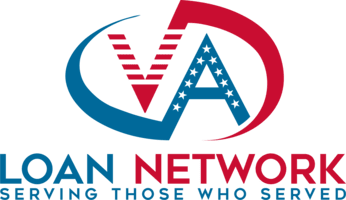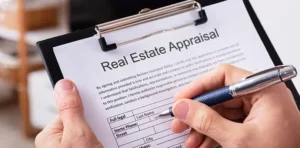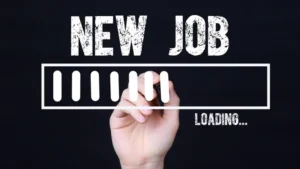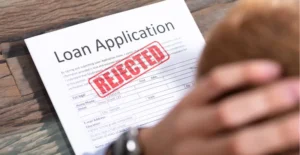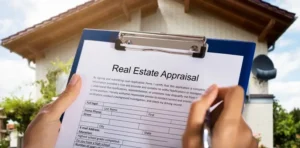As a veteran, you enjoy exclusive benefits with a VA loan, such as no private mortgage insurance and potentially lower interest rates.
But many borrowers overlook discount points—upfront fees that can drive your VA mortgage interest rate down even further. This strategy isn’t for everyone, so it’s vital to understand how discount points work, how they differ from origination points, and whether they align with your homeownership timeline.
In the following guide, you’ll learn the pros and cons of buying discount points, how to calculate the break-even point, and essential tips to make the most informed decision possible.
In this Article
Understanding Discount Points on a VA Loan
Discount points, sometimes referred to as “mortgage points,” are optional fees paid at closing to “buy down” or reduce the interest rate on your VA loan. Each discount point typically costs 1% of the loan amount and may lower the VA mortgage interest rate by around 0.25%, though the exact reduction can vary by lender and current market conditions.
- Cost: 1% of the total loan amount per point (e.g., 1 point on a $300,000 loan = $3,000).
- Rate Reduction: ~0.25% per discount point, but this varies.
- Payment Method: Paid upfront at closing (cannot usually be rolled into the loan beyond certain VA guidelines).
- Tax Deduction: Often tax-deductible in the year paid if you itemize deductions (consult IRS Publication 936 or a tax advisor for details).
Discount points are entirely optional. They can make sense if you intend to own the home long enough for the monthly savings to outweigh the upfront expense. Short-term homeowners, or those planning to refinance soon, may not see enough benefit to justify the cost.
How Do Discount Points Impact Your Monthly Payments?
Paying discount points lowers your interest rate. In practical terms, this means smaller monthly mortgage payments. Over the life of a 15- or 30-year mortgage, those incremental monthly savings can add up substantially.
Here’s a simplified example to illustrate potential monthly savings when buying discount points on a 30-year VA loan:
| Loan Amount | Base Rate | Points Purchased | Cost of Points | New Rate | Monthly Payment (P&I) | Monthly Savings |
|---|---|---|---|---|---|---|
| $300,000 | 6.0% | 1 (1%) | $3,000 | 5.75% | $1,751 | $43 |
| $300,000 | 6.0% | 2 (2%) | $6,000 | 5.50% | $1,702 | $92 |
Note: Rates and savings vary by lender, credit score, and market conditions. Payment estimates above are for principal and interest (P&I) only and do not include property taxes, homeowners insurance, or other escrow items.
Long-Term Cost: Exploring Break-Even Points and Amortization
The key to determining whether discount points are worth it is the break-even point: the time (in months) it takes for your monthly savings to equal the upfront cost of the points. Once you cross that threshold, you begin to see net savings on your mortgage.
Here’s a detailed look at how to calculate a break-even point:
- Calculate Monthly Savings: Subtract your new monthly payment (with points) from your old monthly payment (without points).
- Divide Upfront Cost by Monthly Savings: If your upfront cost is $6,000 and you’re saving $92 per month, your break-even point is approximately $6,000 / $92 ≈ 65 months (~5.4 years).
- Compare Break-Even to Expected Time in Home: If you plan to stay in the property for longer than 5.4 years, you’ll save money overall. If you might move or refinance sooner, discount points may not be worthwhile.
For veterans with plans to stay in a home for 7+ years, discount points can be an excellent strategy for long-term interest savings. However, if you’re uncertain about how long you’ll live in the property, be cautious about investing thousands of dollars upfront.
Real-World Example with Amortization Impact
Let’s imagine you take out a $300,000 VA loan at 6% interest on a 30-year term. We’ll compare it to paying two discount points to lower the rate to 5.5%. Below is a simplified snippet of an amortization comparison over the first five years.
| Year | Balance Without Points (6.0%) | Balance With 2 Points (5.5%) | Interest Paid (No Points) | Interest Paid (With Points) |
|---|---|---|---|---|
| 1 | $295,535 | $294,567 | $17,950 | $16,987 |
| 2 | $290,847 | $289,547 | $35,480 | $33,548 |
| 3 | $285,919 | $284,265 | $52,650 | $49,683 |
| 4 | $280,737 | $278,709 | $69,482 | $65,409 |
| 5 | $275,286 | $272,864 | $85,999 | $80,739 |
Note: Figures are approximate and for illustration only. Actual numbers will differ based on closing date, additional fees, and payment schedules.
Over five years, you’d pay roughly $5,260 less in total interest by buying two points. If you paid $6,000 upfront for those points, you’re close to breaking even by the end of five years. After that, you’d enjoy net savings every month you remain in the home.
Pros and Cons of Buying Discount Points on a VA Loan
Pros
- Lower Monthly Payments: You’ll reduce your interest rate, lowering your monthly out-of-pocket expenses.
- Significant Long-Term Savings: Over 15–30 years, interest savings can add up to tens of thousands of dollars.
- Potential Tax Benefits: Points are often tax-deductible for primary residences (consult the IRS or a tax professional).
- Maximize VA Loan Advantages: VA loans already have no PMI and competitive rates; adding points can further enhance affordability.
Cons
- High Upfront Cost: Points are paid at closing, which can strain your budget if you’re short on savings.
- Extended Break-Even Period: You may need to stay in the home for several years before recouping the initial cost.
- Opportunity Cost: Tying up cash in points might prevent you from using funds for other important goals (e.g., emergency savings).
- Non-Refundable: If you sell or refinance before reaching the break-even point, you could lose money.
Discount Points vs. Origination Points vs. Lender Credits
Origination points are fees a lender charges to process and underwrite your VA loan. While sometimes labeled as “points,” they do not reduce your interest rate. In contrast, discount points are optional and specifically intended to buy down the interest rate.
- Discount Points: Voluntary, lower your rate, typically tax-deductible.
- Origination Points: Cover lender fees, do not lower your rate, usually not tax-deductible.
- Lender Credits: The opposite of discount points—lenders offer credits toward closing costs in exchange for a higher interest rate.
Comparing these options can help you find the best balance between upfront costs and long-term savings. Sometimes, veterans choose lender credits if they need to reduce closing costs. Others pay discount points to secure a lower rate. The right choice depends on your cash flow, future plans, and overall financial strategy.
Are VA Discount Points Tax-Deductible?
In most cases, yes. The IRS typically considers discount points paid on a primary residence as prepaid interest. According to IRS Publication 936, eligible discount points can be deducted in the year they are paid—assuming you itemize deductions on your tax return. However, specific scenarios (like refinances) may require you to spread out the deduction over the life of the loan. Always consult a licensed tax professional for personalized advice.
How Discount Points Affect the VA Funding Fee and Other Costs
The VA funding fee is a separate, mandatory one-time fee for most VA loans. It helps offset program costs for the Department of Veterans Affairs, ensuring the benefit remains available for future veterans. Discount points do not reduce or replace the VA funding fee. They’re an entirely separate cost structure. Typically, you can finance the VA funding fee into your loan balance, but discount points often must be paid at closing (subject to lender and VA guidelines).
Using Discount Points in Refinancing or When Selling Your Home
Refinancing: When you refinance your VA loan, any discount points you paid on your original loan are non-refundable. If you’re considering a VA Interest Rate Reduction Refinance Loan (IRRRL), be aware that buying new points at the time of the refinance would again require upfront payment.
Selling: If you sell your home before hitting the break-even point, you’ll lose potential savings you might have recouped through lower monthly payments. This is why it’s crucial to carefully weigh how long you intend to stay in your home before purchasing discount points.
Who Should Consider Buying Discount Points on a VA Loan?
Paying for discount points may be a smart move for:
- Veterans Planning Long-Term Ownership: If you’ll stay put for at least 5–7 years, you’re more likely to see a return on your upfront investment.
- Borrowers with Sufficient Cash Reserves: Ensure you have enough funds for closing costs, moving expenses, and an emergency fund before buying points.
- Homeowners Seeking Low Monthly Payments: If you prioritize lower monthly bills over keeping cash liquid, discount points might help.
Actionable Steps: How to Evaluate if Discount Points Are Right for You
- Estimate Your Monthly Savings: Use a mortgage calculator to see the monthly difference with and without discount points.
- Determine Your Break-Even Point: Calculate how many months it will take for your monthly savings to surpass the upfront cost.
- Assess Your Timeline: Decide how long you realistically plan to keep the mortgage. If it’s shorter than the break-even point, points might not be wise.
- Consult a Professional: Speak to your lender or a qualified financial advisor to confirm calculations and discuss your unique situation.
- Compare Offers: Get Loan Estimates from at least three VA-approved lenders. Some may offer larger rate reductions for the same or fewer points.
Expert Insights and Quotes
“For many veterans, investing in discount points can be a solid long-term strategy—provided they have the financial resources and plan to remain in the home beyond their break-even point. It’s critical to run the numbers carefully, compare quotes, and talk with professionals who understand the nuances of VA loans.” – John Smith, Senior Mortgage Advisor with 15+ years of VA loan experience.
Frequently Asked Questions (FAQs)
1. What are discount points on a VA loan?
Discount points are optional fees paid at closing to lower your VA loan interest rate. One discount point generally costs 1% of the loan amount and reduces the interest rate by about 0.25%, though exact figures vary.
2. Are discount points tax-deductible for veterans?
Often, yes. The IRS treats discount points on a primary residence as prepaid interest, which may be deductible in the year paid. However, refinanced or investment property scenarios might require a different approach, so consult a tax advisor.
3. Can I roll discount points into my VA loan?
In most cases, discount points must be paid in cash at closing. While the VA allows financing of the funding fee, discount points are typically excluded from that option, subject to certain caps and guidelines.
4. How do I know if buying points is worth it?
Calculate your break-even point by dividing the cost of points by your expected monthly savings. If you plan to live in the home longer than the break-even window, points could save you money.
5. Do discount points affect the VA funding fee?
No. The VA funding fee is a separate charge that helps sustain the VA loan program. Paying discount points does not reduce, replace, or eliminate the VA funding fee.
6. What happens to my points if I refinance or sell?
If you refinance or sell before reaching your break-even point, you may lose the benefit of any discount points you’ve already paid. They are non-refundable.
7. Are half-points (e.g., 0.5 points) available on a VA loan?
Some lenders offer fractional points, but not all do. Ask your lender about this option and see how it impacts your rate and costs.
8. Do all VA lenders offer discount points?
Most VA-approved lenders offer discount points, but the exact rate reduction and cost per point can differ. Always shop around to find the best combination of rate and fees.
The Botton Line
Buying discount points on a VA loan can unlock substantial savings over the life of your mortgage, especially if you plan to stay in your home for several years. However, the decision requires careful calculation of your break-even point, comparison of lender offers, and a firm grasp of your long-term financial goals. Before jumping in, gather detailed quotes, consult credible sources, and speak with a VA loan-savvy professional to tailor the right strategy for your situation. With a bit of research and planning, you can maximize the already robust advantages of a VA loan and make homeownership more affordable.
Ready to Take the Next Step?
If you’re considering discount points, talk to one of our VA loan specialists and compare loan offers to see how much you could save. Take advantage of our home affordability calculator to crunch the numbers, and don’t hesitate to contact a trusted financial advisor for personalized guidance.

